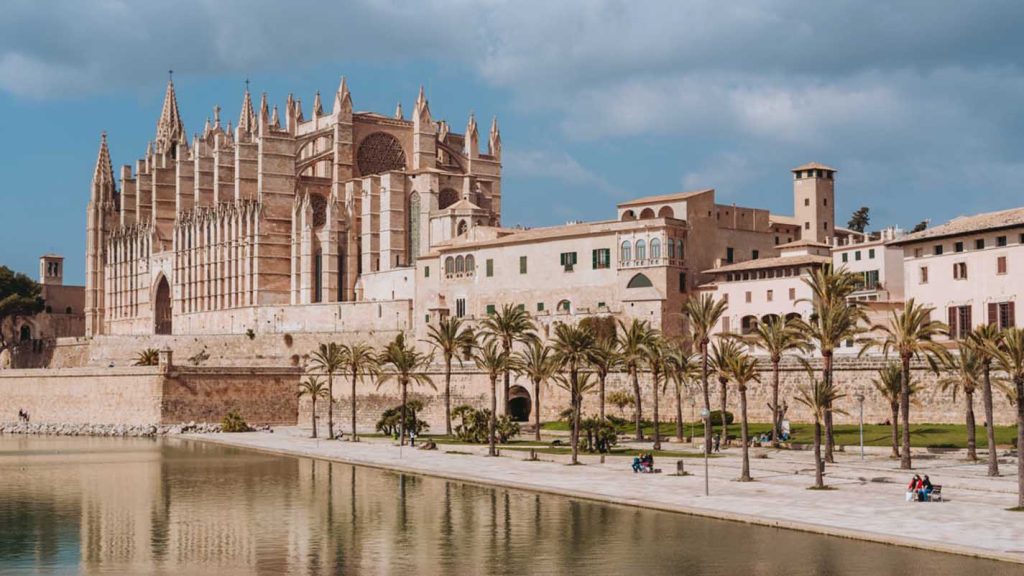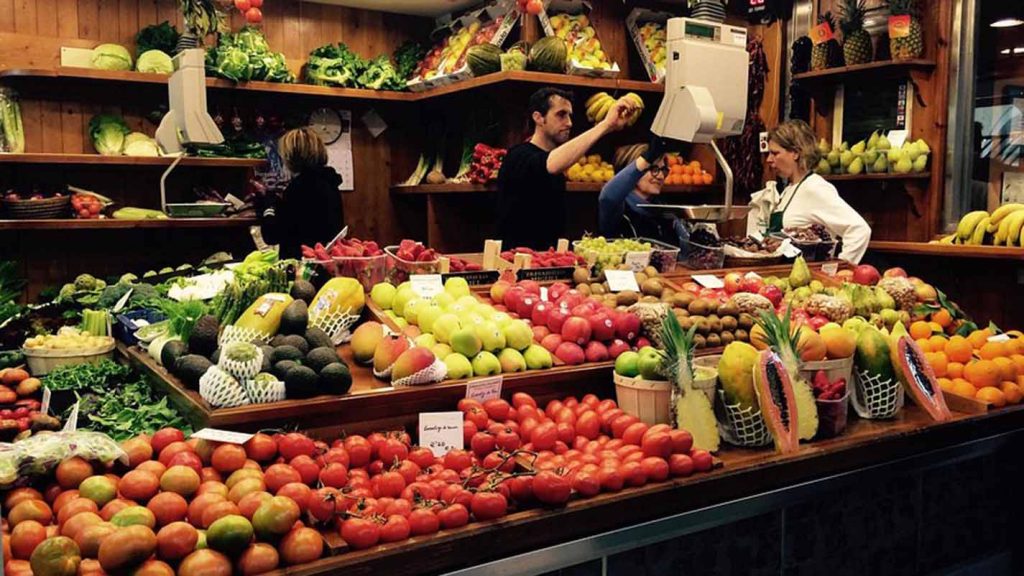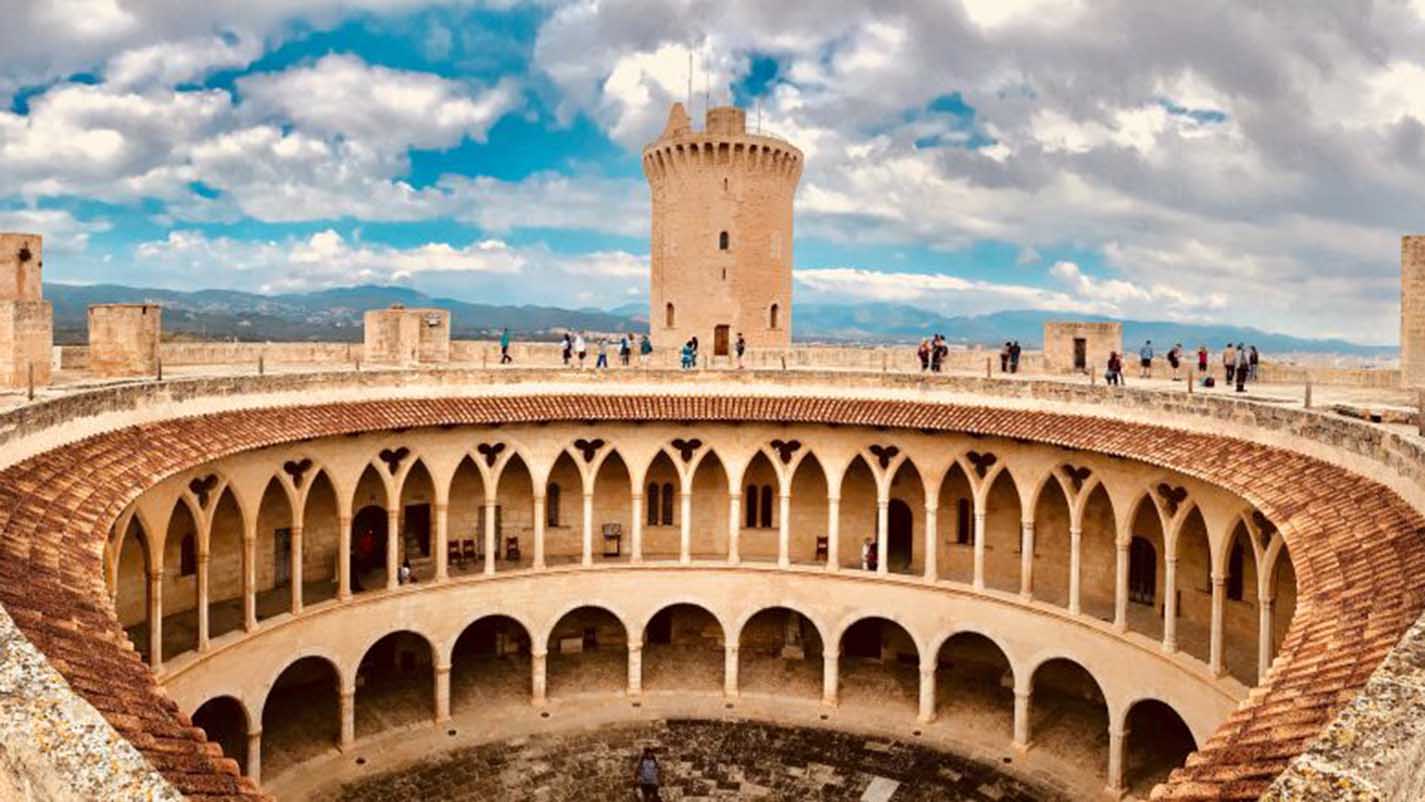Palma, the vibrant capital of Mallorca, is a city where history, culture, and Mediterranean charm converge. With its majestic Gothic cathedral, winding cobblestone streets, lively markets, and modern boutiques, Palma offers a rich tapestry of experiences for every traveler. Whether you are a history enthusiast, a food lover, an art aficionado, or simply seeking sun-soaked relaxation, the city has something for everyone. This comprehensive guide will help you navigate Palma’s highlights, discover hidden gems, and enjoy the city like a local.
Why Visit Palma?
Palma is often the first stop for visitors arriving on the island, and for good reason. The city’s blend of history and modernity creates a unique urban landscape. Ancient architecture sits side by side with contemporary galleries, trendy cafés, and stylish shops. The Mediterranean climate ensures plenty of sunshine, making it perfect for exploring both indoors and outdoors. Palma is also a hub for cultural experiences, offering theaters, music venues, and vibrant nightlife. Its location on the southwest coast of Mallorca provides easy access to nearby beaches and coastal excursions, making it a convenient base for exploring the rest of the island.

Iconic Landmarks
La Seu Cathedral
The Gothic cathedral of La Seu is undoubtedly Palma’s most iconic landmark. Its soaring spires dominate the city skyline, and the intricate stonework and stained glass windows inside create an awe-inspiring atmosphere. Designed to capture the sunlight in a mesmerizing way, the cathedral also features works by renowned architect Antoni Gaudí. Don’t miss the serene cloisters and the terrace overlooking the Parc de la Mar and the sparkling Mediterranean Sea.
Almudaina Palace
Adjacent to La Seu, the Almudaina Palace is a historic royal residence that reflects Mallorca’s rich history. Originally a Moorish fortress, it has been transformed over the centuries into a stunning palace with royal apartments, courtyards, and decorative halls. Visitors can explore the grand interiors, admire the medieval architecture, and learn about the island’s fascinating past through informative exhibits.
Bellver Castle
Perched on a hill overlooking Palma Bay, Bellver Castle is a circular fortress with panoramic views of the city and coastline. Built in the 14th century, it houses the Palma History Museum, making it both a scenic and educational stop. Its unique circular design is rare in European castles, and walking along the ramparts provides breathtaking photo opportunities.
Charming Neighborhoods
Old Town (Casco Antiguo)
The heart of Palma lies in the Old Town, where narrow winding streets, historic squares, and charming courtyards invite exploration. Stroll through Plaça Major, a lively square surrounded by cafés and boutiques, or discover hidden artisan shops tucked away on cobblestone alleys. The area is rich in history, with buildings dating back centuries, and it’s easy to get lost in its labyrinthine streets while discovering charming corners and local treasures.
Santa Catalina
Once a bustling fish market district, Santa Catalina has transformed into a trendy neighborhood filled with gourmet restaurants, tapas bars, and stylish cafés. Its lively atmosphere and bohemian vibe make it a popular spot for both locals and tourists. Don’t miss the Mercat de Santa Catalina, where fresh produce, seafood, and local delicacies can be sampled or purchased.
La Lonja
La Lonja, named after the historic merchants’ exchange building, is a vibrant district that comes alive in the evenings. Its narrow streets host art galleries, cocktail bars, and chic restaurants. It’s an excellent area to experience Palma’s nightlife while enjoying historic architecture and cultural events.
Palma’s Beaches and Waterfront
While Palma is primarily a city destination, its waterfront and nearby beaches offer plenty of relaxation. Playa de Palma is a long stretch of sandy beach ideal for sunbathing, swimming, and watersports. For a more tranquil experience, head to Cala Mayor, a smaller beach surrounded by pine trees and luxury hotels. The Paseo Marítimo, a waterfront promenade, is perfect for evening walks, jogging, or enjoying a drink while watching the sunset over the marina.
Art, Culture, and Museums
Palma is a haven for art lovers. The Es Baluard Museum of Modern and Contemporary Art showcases works by Spanish and international artists, set against a backdrop of historic city walls. Fundació Pilar i Joan Miró celebrates the life and works of the legendary Mallorcan artist Joan Miró, with paintings, sculptures, and ceramics on display. For a deeper dive into local history, the Museu de Mallorca and Palma History Museum provide fascinating insights into the island’s past.
The city also hosts regular cultural events, including classical concerts in historic venues, contemporary art exhibitions, and traditional festivals that allow visitors to experience Mallorcan traditions firsthand.
Gastronomy and Dining
Palma’s culinary scene is a delightful blend of traditional Mallorcan flavors and modern gastronomy. Tapas bars, seafood restaurants, and international eateries are scattered throughout the city. Must-try local dishes include:
- Sobrasada – a cured sausage with a soft, spreadable texture.
- Ensaimada – a sweet pastry perfect for breakfast or dessert.
- Frito Mallorquín – a traditional dish made with vegetables, potatoes, and local meat.
- Fresh seafood – grilled fish, prawns, and octopus prepared with Mediterranean herbs and olive oil.
For fine dining, Palma offers Michelin-starred restaurants and modern gastronomic experiences. Many establishments provide terraces with city or sea views, enhancing the dining experience with a sense of place. Street markets, such as Mercat de l’Olivar, offer fresh produce, local cheeses, and specialty items that can be sampled or taken home as souvenirs.

Palma is also a shopping paradise. Passeig des Born, the city’s main avenue, is lined with designer boutiques, high-street brands, and charming cafés. The streets of the Old Town host artisan shops selling jewelry, ceramics, leather goods, and handmade textiles. Local markets provide an authentic shopping experience, where you can haggle for fresh produce, souvenirs, and traditional crafts.
Accommodation
Palma offers a range of accommodations to suit every preference and budget:
- Luxury Hotels: Five-star hotels with sea views, rooftop pools, spas, and gourmet dining. Popular neighborhoods include the waterfront, Santa Catalina, and near the Old Town.
- Boutique Hotels: Small, stylish hotels in the Old Town or quieter districts, offering personalized service and unique design.
- Budget Options: Hostels and three-star hotels scattered around the city, often close to public transport and key attractions.
Booking through reliable travel platforms or boutique agencies is recommended to secure the best rates and flexible arrangements. Many luxury properties offer packages that include guided city tours, spa treatments, or dining experiences.
Getting Around Palma
Palma’s compact size makes it ideal for walking, especially in the Old Town and waterfront areas. Public transport includes buses that connect key neighborhoods, while taxis and ride-sharing services are widely available. For exploring outside the city, car rentals provide flexibility for visiting nearby beaches, mountains, and villages. Bicycles and electric scooters are increasingly popular, allowing visitors to navigate the city efficiently while enjoying the Mediterranean weather.
Day Trips from Palma
Using Palma as a base, several day trips are easily accessible:
- Valldemossa – a charming village in the Tramuntana mountains.
- Sóller and Port de Sóller – reachable by historic train, offering picturesque streets and a scenic bay.
- Cabrera Archipelago – a protected marine park ideal for boat excursions and snorkeling.
- Alcúdia and Pollensa – northern towns with medieval charm, historic walls, and sandy beaches.
These destinations provide a balance of culture, nature, and relaxation beyond the city limits.
Practical Tips
- Currency: Euro (€).
- Language: Spanish and Catalan, with English widely spoken in tourist areas.
- Best Exploration: Wear comfortable walking shoes for cobblestone streets.
- Safety: Palma is generally safe, but keep an eye on belongings in crowded areas.
- Local Etiquette: Many shops close in the afternoon for siesta. Dining times are later, with dinner typically after 8 p.m.
Palma is a city that invites exploration, offering an irresistible blend of history, culture, gastronomy, and Mediterranean charm. As you wander through its streets, you can feel centuries of history woven into the architecture, from the awe-inspiring La Seu Cathedral, with its soaring Gothic spires and intricate stained glass, to the ancient Almudaina Palace, a royal residence steeped in tradition. Each neighborhood has its own character and story to tell. The lively district of Santa Catalina buzzes with trendy cafés, gourmet restaurants, and a bustling market where locals shop for fresh produce and artisanal goods. In contrast, La Lonja combines historic architecture with contemporary art galleries, chic bars, and elegant eateries, making it the perfect spot to soak in Palma’s cultural energy.
The city is also a paradise for food lovers. Traditional Mallorcan dishes, such as sobrasada, ensaimada, and fresh seafood, can be savored in cozy tapas bars tucked away in quiet alleys or on sunlit terraces overlooking historic squares. Fine dining options abound, from Michelin-starred restaurants serving innovative Mediterranean cuisine to intimate bistros offering locally sourced specialties. Walking through the Old Town (Casco Antiguo), you’ll find a harmonious mix of historic charm and modern sophistication, with boutique shops, art galleries, and charming plazas creating a vibrant yet relaxed atmosphere.
Palma’s appeal extends beyond its streets and culinary delights. The Paseo Marítimo offers a scenic waterfront perfect for evening strolls, jogging, or simply watching the sunset over the marina while enjoying a refreshing drink. Nearby beaches, such as Playa de Palma and Cala Mayor, provide easy escapes for sunbathing, swimming, or watersports. For those seeking cultural enrichment, the city hosts numerous museums and galleries, including the Es Baluard Museum of Modern and Contemporary Art and the Fundació Pilar i Joan Miró, celebrating the works of Mallorca’s most famous artist.
Ultimately, Palma is more than a city—it is an immersive experience. Its combination of historic architecture, vibrant neighborhoods, exquisite gastronomy, and scenic surroundings ensures that every moment spent here feels memorable and rejuvenating. Whether exploring hidden alleys, savoring local delicacies, or enjoying breathtaking sunsets, visitors leave with a deep appreciation for the city’s timeless beauty. For anyone exploring Mallorca, Palma stands as a cultural hub, a Mediterranean jewel, and the beating heart of the island, offering memories that will linger long after departure.
Tags: Bellver Castle, La Lonja, La Seu Cathedral
